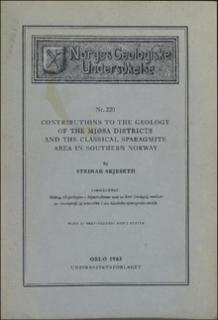Contributions to the geology of the Mjøsa districts and the classical sparagmite area in Southern Norway.
Journal article

Åpne
Permanent lenke
https://hdl.handle.net/11250/2674765Utgivelsesdato
1963Metadata
Vis full innførselSamlinger
- Artikler [1064]
Sammendrag
This publication gives a survey of the main results of geological investigations carried out in the Mjøsa districts in central Southeast Norway by the author during recent years. The transitional situation of the districts between the foreland and the miogeosynclinal zone of the Caledonian geosyncline, has influenced the Paleozoic sedimentation and the tectonics. A short summary analysis of the Sparagmite Group is given. The Sparagmites were deposited in basins or faulted troughs. The sedimentary facies of the Sparagmite formation are explained by the extension and successive development of these basins. The marginal zones are characterized by conglomerates and pure oolitic limestones. The conglomerates were deposited in deltas in connection with the fault zones. Shales predominate in the central parts of the basins. There is a gradual transition from one formation to the next without any signs of folding. The transition from the Sparagmite Group to the fossiliferous Lower Cambrian is marked by a thin conglomerate. There is no marked lithological contrast between the upper formation of the Sparagmite Group and the basal layers of the Lower Cambrian Holmia Series.
